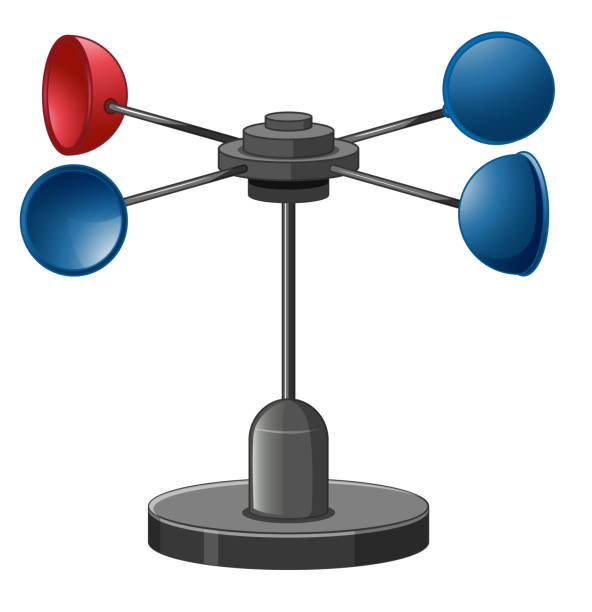All You Required to Find Out About Anemometers: How They Function, Why They Issue, and Where to Make use of Them
Anemometers, though usually forgotten in the world of clinical instruments, play an essential function in various fields, providing important insights into wind rate and air movement patterns. Recognizing the technicians behind these tools is essential for any individual seeking to harness the power of this data. From meteorologists tracking weather patterns to designers designing structures with wind tons in mind, the applications of anemometers are varied and significant. As we look into the intricacies of anemometer modern technology, we will certainly reveal the inner operations of these devices, their value, and the essential factors to consider when choosing the ideal anemometer for specific applications.

Anemometer Essentials
A vital instrument made use of to determine wind speed and direction, the anemometer plays a critical function in meteorology and numerous industries. An anemometer typically is composed of three or 4 cups that revolve in the wind, a vane that directs into the wind, and sensing units to track the activities or rotations.
There are different kinds of anemometers available, consisting of cup anemometers, vane anemometers, hot-wire anemometers, and sonic anemometers, each with its unique functions and applications. Cup anemometers are frequently utilized for fundamental wind speed dimensions, while vane anemometers are preferred for directional dimensions. Hot-wire anemometers are suitable for reduced airspeeds, and sonic anemometers are suitable for high-precision measurements in research study and commercial settings. Comprehending the essentials of anemometers is vital for exact wind data collection and analysis across various markets.
Principles of Anemometer Procedure
Building on the foundational understanding of anemometer basics, the principles of anemometer operation elucidate the mechanics behind wind rate and direction measurements. Cup anemometers, for instance, have 3 or even more cups that capture the wind, causing them to rotate faster as the wind speed increases. Hot-wire anemometers count on a heated cord that cools down as wind passes over it, with the price of cooling identifying the wind rate.
Significance of Anemometers
The value of anemometers in weather forecasting and different sectors can not be overstated. Anemometers play an important role in determining wind speed and instructions, offering crucial information for weather projecting, environment researches, environmental surveillance, and aeronautics procedures. Meteorologists rely upon anemometers to gather precise wind data, assisting them recognize weather patterns, anticipate storms, and concern timely cautions to the public. In industries such as building, farming, renewable energy, and maritime operations, anemometers are utilized to optimize procedures, ensure safety and security, and increase efficiency. For instance, wind ranch operators use anemometers to assess wind problems and take full advantage of electrical power production from wind generators. In browse around these guys the maritime industry, anemometers help ship navigating by giving real-time wind info to captains, assisting them make educated choices to ensure secure voyages. In general, anemometers are crucial tools that add substantially to security, performance, and notified decision-making in meteorology and a vast variety of sectors.
Applications Across Various Industries
In the eco-friendly power industry, anemometers play an essential role in evaluating wind conditions for wind farm positionings, guaranteeing ideal energy production. Industries like building and mining use anemometers to keep track of wind speeds, essential for safety protocols, particularly when working at heights or in open-pit mines where solid winds can present hazards. In farming, anemometers help farmers in managing crop splashing by providing real-time data on wind speed to stay clear of drift.

Selecting the Right Anemometer for Your Requirements
For basic objectives, a cup anemometer is appropriate for measuring wind rate, while a vane anemometer provides wind direction data. Hot-wire anemometers are suitable for low airspeed dimensions, and ultrasonic anemometers offer high precision and sturdiness.

Conclusion
In final thought, anemometers play his response a crucial function in determining wind rate and direction across numerous sectors. It is essential to think about the value of anemometers in order to make informed decisions when picking the most ideal device for determining wind problems.
There are numerous kinds of anemometers available, consisting of mug anemometers, vane anemometers, hot-wire anemometers, and sonic anemometers, each with its special features and applications. Cup anemometers are typically made use of for standard wind rate measurements, while vane anemometers are chosen for directional measurements. Hot-wire anemometers are appropriate for reduced airspeeds, and sonic anemometers are excellent for high-precision measurements in research and industrial settings.Building on the foundational understanding of anemometer fundamentals, the principles of anemometer operation illuminate the mechanics behind wind rate and instructions dimensions. For basic objectives, a mug anemometer is ideal for gauging wind rate, while a vane anemometer provides wind instructions information.
Comments on “Anemometer Innovations: The Most Up To Date Technology for Wind Speed Measurement”